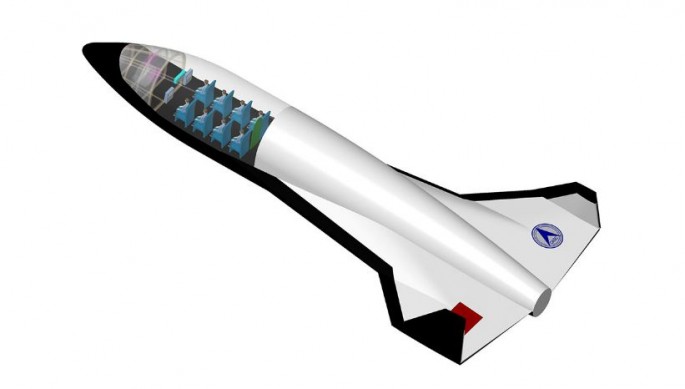China plans a big time entry into the business of space tourism by unveiling plans for what should be the world's largest spaceplane capable of ferrying 20 paying passengers to the inner edge of outer space.
In contrast, Virgin Galactic's SpaceShip Two can carry six tourists and two pilots. This spaceplane can reach 110,000 meters.
The China Academy of Launch Vehicle Technology (CALVT) in Beijing has designed the scale model for a single fuselage spaceplane that can be scaled up to carry up to 20 people, said Lui Haiquang, a rocket scientist at CALVT.
Spaceplane team leader Han Pengxin and his colleagues believe consumer demand will be strong enough to compel them to build a spaceplane carrying more than 20 passengers.
"More and more common persons are interested in the experience of space flight," said the team in a study. They noted the spaceplane project is "very attractive" to "bosses and businessmen."
The flights will cost around $200,000 to $250,000, about similar to Virgin Galactic's, said Han.
The team has designed a winged rocket that takes off under its own power unlike SpaceShipTwo that has to be carried into the upper atmosphere by a mothership before being launched.
The team described their spaceplane in their paper presented at the International Astronautical Congress in Mexico last week.
It reported their vehicle will take off vertically like a rocket and land on the runway automatically without any ground or on-board intervention. It will burn liquid methane and liquid oxygen.
The team designed two versions of their rocket plane. The first has a mass of 10 tonnes and a wingspan of 6 meters. This one should be able to fly five people to an altitude of 100 kilometers, the altitude where space officially begins, at speeds up to Mach 6, giving two minutes of weightlessness.
The second will be a scaled-up 100 tonne version with a 12 meter wingspan that can fly 20 people to 130 kilometers at Mach 8, giving four minutes of weightlessness.
This larger spacecraft is also fast enough to help deliver small satellites into orbit with the help of a small rocket stage add-on atop the vehicle. The team believes carrying payloads will cut tourist ticket prices.
They also intend to make it reusable, so each plane can make up to 50 flights.



























